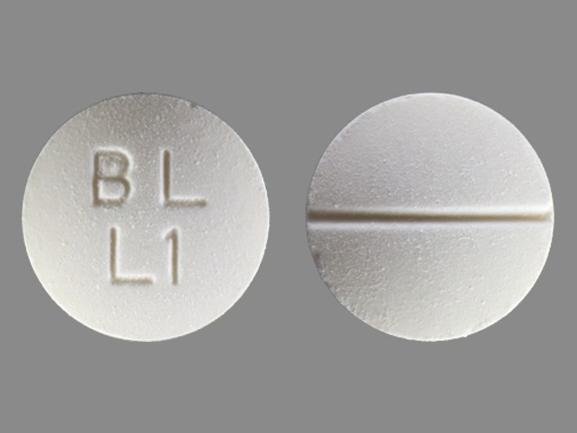Lysodren Side Effects
Generic name: mitotane
Medically reviewed by Drugs.com. Last updated on May 17, 2024.
Note: This document provides detailed information about Lysodren Side Effects associated with mitotane. Some dosage forms listed on this page may not apply specifically to the brand name Lysodren.
Applies to mitotane: oral tablet.
Important warnings
This medicine can cause some serious health issues
Oral route (tablet)
In patients taking mitotane, adrenal crisis occurs in the setting of shock or severe trauma and response to shock is impaired.
Administer hydrocortisone, monitor for escalating signs of shock and discontinue mitotane until recovery.
Serious side effects of Lysodren
Along with its needed effects, mitotane (the active ingredient contained in Lysodren) may cause some unwanted effects. Although not all of these side effects may occur, if they do occur they may need medical attention.
Check with your doctor immediately if any of the following side effects occur while taking mitotane:
More common
- darkening of the skin
- diarrhea
- dizziness or lightheadedness
- drowsiness
- loss of appetite
- mental depression
- nausea or vomiting
- skin rash
- unusual tiredness or weakness
Less common
- blood in the urine
- blurred vision
- double vision
Incidence not known
- bloating
- chills
- cloudy urine
- cold sweats
- confusion
- dizziness, faintness, or lightheadedness when getting up from a lying or sitting position
- feeling of warmth
- fever
- frequent urination
- headache
- pelvic cramping, discomfort, pain, or heaviness
- nervousness
- painful urination
- pounding in the ears
- redness of the face, neck, arms, and occasionally, upper chest
- slow or fast heartbeat
- vaginal bleeding
- vision changes
- white area over the eye
Other side effects of Lysodren
Some side effects of mitotane may occur that usually do not need medical attention. These side effects may go away during treatment as your body adjusts to the medicine. Also, your health care professional may be able to tell you about ways to prevent or reduce some of these side effects.
Check with your health care professional if any of the following side effects continue or are bothersome or if you have any questions about them:
More common
- feeling of constant movement of self or surroundings
- indigestion
- passing of gas
- sensation of spinning
- sleepiness
Less common
- aching muscles
- flushing or redness of the skin
- muscle twitching
For healthcare professionals
Applies to mitotane: oral tablet.
General
Common adverse reactions occurring in at least 15% of patients included anorexia, nausea, vomiting, diarrhea, depression, dizziness, vertigo, and rash.
Cardiovascular
- Frequency not reported: Hypertension, orthostatic hypotension, flushing[Ref]
Dermatologic
Endocrine
- Very common (10% or more): Adrenal insufficiency (up to 100%)
- Common (1% to 10%): Decreased androstenedione, decreased blood testosterone (in females), increased sex hormone binding globulin (in both males and females), decreased blood free testosterone (in males), gynecomastia
- Frequency not reported: Hypogonadism (in males), hypothyroidism/thyroid impairment[Ref]
Hypogonadism in males included symptoms such as gynecomastia, decreased libido, erectile dysfunction, and fertility disorders. In pediatric patients, estrogenic-like effects occurred, such as gynecomastia in males, and breast development and/or vaginal bleeding in females.[Ref]
Gastrointestinal
- Very common (10% or more): Diarrhea (up to 80%), nausea (up to 80%), vomiting (up to 80%), epigastric discomfort (at least 10%), mucositis (at least 10%)
- Frequency not reported: Dysgeusia, dyspepsia, salivary hypersecretion[Ref]
Genitourinary
- Frequency not reported: Albuminuria, hematuria, hemorrhagic cystitis, non-malignant ovarian macrocysts (with symptoms such as pelvic pain, bleeding), proteinuria[Ref]
Hematologic
- Very common (10% or more): Prolonged bleeding time (up to 90%), leukopenia/neutropenia (up to 12%)
- Common (1% to 10%): Anemia, thrombocytopenia[Ref]
Hepatic
- Very common (10% or more): Elevated liver enzymes (at least 10%)
- Common (1% to 10%): Autoimmune hepatitis
- Frequency not reported: Liver damage[Ref]
Elevated liver enzymes included gamma-GT, aminotransferase, and alkaline phosphatase.
Liver damage included hepatocellular, cholestatic, and mixed hepatitis.[Ref]
Hypersensitivity
- Frequency not reported: Hypersensitivity reactions
Metabolic
- Very common (10% or more): Anorexia (up to 80%), increased plasma cholesterol/hypercholesterolemia (at least 10%), increased plasma triglycerides/hypertriglyceridemia (at least 10%)
- Frequency not reported: Decreased blood uric acid/hypouricemia[Ref]
Musculoskeletal
- Very common (10% or more): Myasthenia (at least 10%)[Ref]
Nervous system
- Very common (10% or more): Dizziness (up to 40%), vertigo (up to 40%), ataxia (at least 10%), paresthesia (at least 10%), sleepiness (at least 10%)
- Common (1% to 10%): Mental impairment, polyneuropathy, movement disorder, headache
- Frequency not reported: Balance disorders, memory defects, central vestibular syndrome, dysarthria, Parkinson's syndrome, encephalopathy, neuro-psychological retardation (pediatric)[Ref]
Nervous system undesirable effects occurred in approximately 40% of patients, and appeared reversible after cessation of treatment and decrease in plasma levels. Anorexia may constitute the hallmark of initial central nervous system impairment.[Ref]
Ocular
- Common (1% to 10%): Maculopathy
- Frequency not reported: Blurred vision, diplopia, lens opacity, toxic retinopathy, visual impairment[Ref]
Other
- Common (1% to 10%): Growth retardation
- Frequency not reported: Asthenia/weakness, generalized aching, fever, opportunistic mycosis[Ref]
Psychiatric
- Very common (10% or more): Depression (up to 40%), confusion (at least 10%)
- Frequency not reported: Aggressiveness[Ref]
References
1. (2001) "Product Information. Lysodren (mitotane)." Bristol-Myers Squibb
More about Lysodren (mitotane)
- Check interactions
- Compare alternatives
- Pricing & coupons
- Drug images
- Dosage information
- During pregnancy
- Drug class: miscellaneous antineoplastics
- En español
Patient resources
Professional resources
Related treatment guides
Further information
Lysodren side effects can vary depending on the individual. Always consult your healthcare provider to ensure the information displayed on this page applies to your personal circumstances.
Some side effects may not be reported. You may report them to the FDA.

